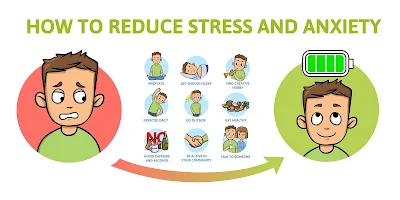In a world teeming with stressors, it’s imperative to discern the subtle signals that your mind and body may be sending. Anxiety disorders, though often misunderstood, are a prevalent facet of modern life, affecting millions worldwide. Understanding the intricate web of symptoms associated with anxiety disorders is paramount for fostering mental well-being. Let’s delve into the nuances of this complex psychological terrain.
The Spectrum of Anxiety: A Multifaceted Overview
Anxiety disorders are not a monolithic entity but rather a spectrum of conditions, each manifesting with its unique set of symptoms. Generalized Anxiety Disorder (GAD), Panic Disorder, Social Anxiety Disorder, and Specific Phobias are just a few threads in this intricate tapestry. Recognizing the diverse manifestations is crucial for an accurate understanding.
Generalized Anxiety Disorder (GAD): The Chronic Sentinel
GAD stands as a chronic, pervasive form of anxiety, where individuals experience excessive worry and fear about various aspects of their lives. From health concerns to everyday responsibilities, the persistent nature of these worries is a hallmark of this disorder.
Decoding Panic Disorder: Unmasking the Unexpected
Panic Disorder, on the other hand, is characterized by sudden and intense episodes of fear, commonly known as panic attacks. These attacks can be paralyzing, accompanied by physical symptoms such as rapid heartbeat, shortness of breath, and a feeling of impending doom.
Navigating Social Anxiety Disorder: The Hidden Struggle
Social Anxiety Disorder introduces a nuanced layer, encompassing an intense fear of social situations. Individuals grappling with this disorder may fear judgment, scrutiny, or embarrassment, leading to avoidance of social interactions.
Specific Phobias: Unraveling the Threads of Fear
Delving deeper, Specific Phobias spotlight irrational fears tied to specific objects or situations. From heights to animals, these fears can significantly impact daily life, compelling individuals to navigate their surroundings with caution.
The Silent Symptoms: Physical Manifestations of Anxiety
Beyond the well-known psychological symptoms, anxiety often extends its influence to the physical realm. Muscle tension, fatigue, restlessness, and sleep disturbances are silent indicators that the body is grappling with heightened stress levels.
Seeking Solace: Coping Mechanisms and Treatment Options
Acknowledging anxiety is only the first step; the journey towards well-being involves exploring coping mechanisms and seeking professional support. Cognitive-Behavioral Therapy (CBT), medication, and lifestyle modifications are integral components of a comprehensive approach.
Cognitive-Behavioral Therapy (CBT): Rewiring Thought Patterns
CBT, a cornerstone in anxiety treatment, focuses on identifying and modifying negative thought patterns. By fostering a healthier mindset, individuals can gain control over their anxiety, paving the way for lasting change.
Medication: Balancing the Neurochemical Equation
In certain cases, medication becomes a crucial ally in managing anxiety. Selective Serotonin Reuptake Inhibitors (SSRIs) and Benzodiazepines are among the pharmacological options, each catering to specific aspects of anxiety disorders.
Lifestyle Modifications: Nurturing Holistic Well-Being
A holistic approach encompasses lifestyle modifications, including regular exercise, adequate sleep, and mindfulness practices. These pillars contribute to overall mental resilience, fortifying individuals against the onslaught of anxiety.
Nurturing a Compassionate Understanding: Breaking the Stigma
In the journey to outrank existing content, fostering a compassionate understanding of anxiety is pivotal. Education, open dialogue, and eradicating stigma surrounding mental health are keystones in cultivating a society where individuals feel empowered to seek help without fear of judgment.
Conclusion: Empowering Minds, One Article at a Time
In unraveling the intricate tapestry of anxiety disorders, our aim is clear—to empower individuals with knowledge, understanding, and avenues for seeking help. By delving into the specifics of symptoms, treatment options, and DE stigmatization efforts, we pave the way for a more compassionate and informed discourse around mental health.

